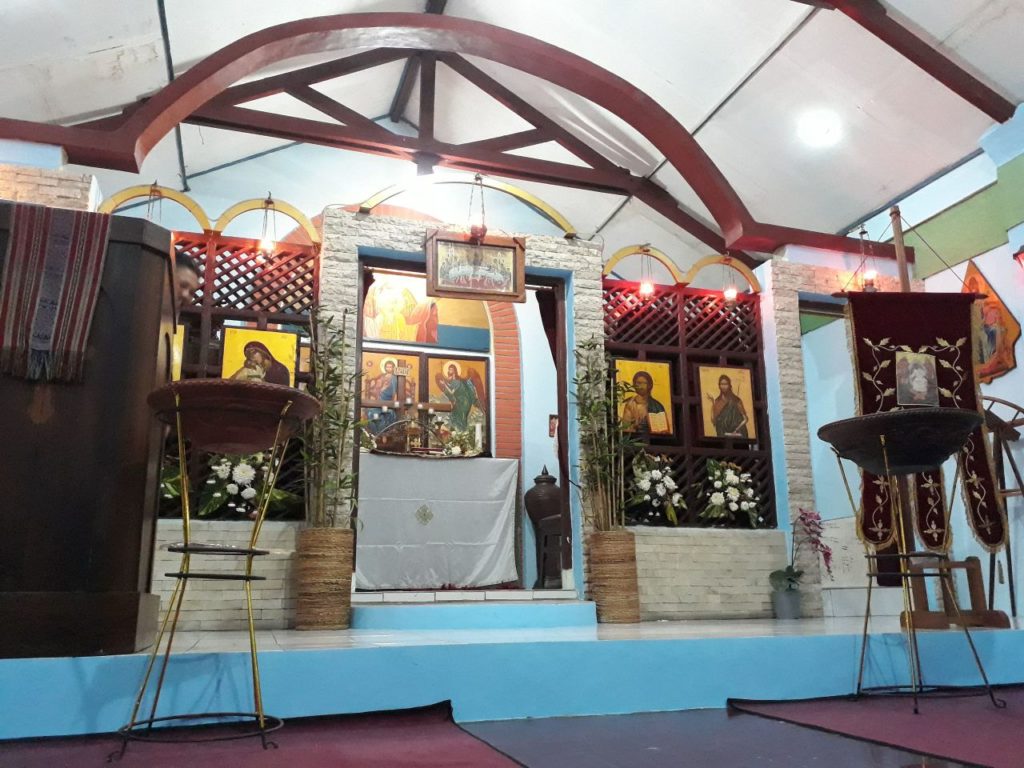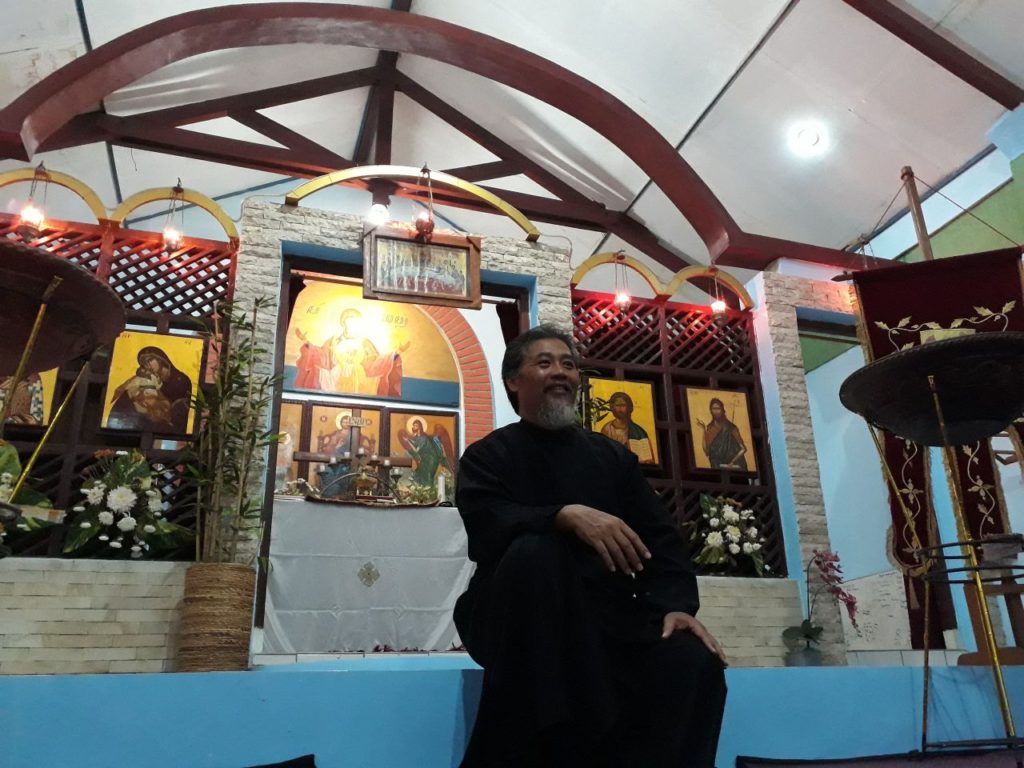I used to read a story about a man, a devout Catholic, who asked his Bishop, “Why are Catholic churches always so majestic and bustling with decorations?” and the Bishop said that, “Do not you know that for a Catholic, one of the important things to note is what we do in the house of the Lord. If it is so important, then why do not we make God’s house as beautiful as possible?”
During my life, I tend to be close to the Catholic environment. Many of my friends are Catholic, most of my extended family is Catholic and even my mother was a Catholic. Therefore I am closer and familiar with church buildings that look simple on the outside but magnificent and beautiful inside. Catholics love to decorate their church beautifully and complete with ornaments. That the reason why in our last visit to churches, I was quite surprised by how simple Orthodox churches was. However, I believe no matter how simple a building of worship, there are still reasons and philosophies that reflect the teachings of its people.
At the first moment arrived at the church, from the outside, the building does not look like a church. It was just like an ordinary house. But upon entering the main hall of the building, I was greeted by a simple, beautiful, and classic decoration. This simple splendor indirectly led me to assume that the Orthodox is a minority, even within Christianity itself. It was true. Father Lazarus Bambang Sujarno, who is in charge of this church, says that in the Yogyakarta region the number of Orthodox followers is only about 60 people. Orthodox is the oldest Christian face and comes from the period closest to Jesus’ lifetime. Orthodox affirms its existence after the advent of Gnostic teachings. In general they do not have strict rules, but the important point is that Orthodox is a religion that seeks to purify the early teaching brought by Jesus. As the name implies, Orthos and Doxa means true teaching. The oldest Orthodox network in Iraq still uses the Aramaic language—the language used in the time of Jesus, before it evolved into the authority of the Greek division and ROCCA (Russian Orthodox Church Culture of Asia). The church we visited was under Greek authority, the patriarch of Constantinople and the Singapore-South Asia diocese. So basically they have hierarchical authority, but are not strictly binding like in Catholicism.
Now we will discuss the decoration. Every part of the church’s decoration contains a philosophical meaning, a symbolization of orthodox teachings. Unlike the two churches we visited before, the Orthodox has a special grip to be found in an Orthodox church. The Orthodox Church must have a dome. In the case of the Orthodox Church we have visited, they do not have domes outside the building. However, they laid a curved roof frame that resembled a dome above the main altar. The Orthodox Church must face east. This is based on the doctrine that the Messiah will come from the east.
The Orthodox Church should also be divided into four main sections. The first part starts from the outside is the front yard. In the ritual of worship, The Yard is used as a place for those who have not been baptized. The second part is the Ark Room. Named according to the philosophy of Noah’s ark, the place where the survivors gather. The Ark Room is used for those who have been baptized. The third part is the Holy Room, The Nave (Ruang Kudus). The Holy Room is used for the reading of the bible and the sacraments, and for the baptismal process. Last part is The Sanctuary (Ruang Maha Kudus). The Sanctuary is an altar room, theoretically only the priest can enter this room. Between the Holy Room and the Sanctuary there are curtains or iconostasis. Iconostasis is a screen or wall that separates the two rooms. In Iconostasis there must be icons, paintings that contain meaning.
The Orthodox doctrine is based on the omniscient divinity. However, they also acknowledge the existence of Mary and the descent of Jesus as a manifestation of God’s love. Their doctrines and beliefs are symbolized in every part of the church. When the bachelor degree, Mrs. Sariyatun, a lecturer in the class of Agrarian History once said that decoration and architecture is a form of artistic expression of the values that we believe. Therefore, the beauty of a place, is a reflection of the love of the maker. That’s what I saw in the Orthodox Church. They poured their love in a simple space and produced a magnificent impression in my eyes.
***

